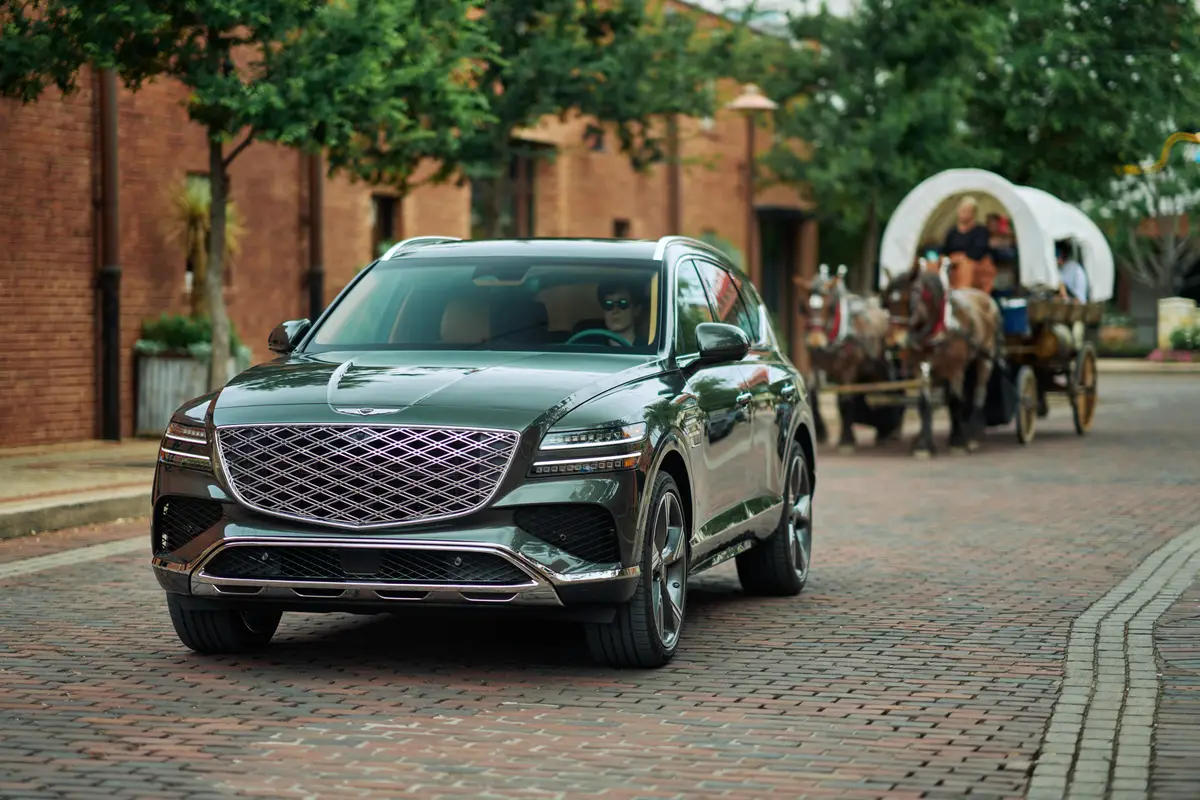chicagotribune.com's view
Should’ve done this the first time around when the Mercury Villager was introduced in the 1993 model year.
Ah, well, can’t complain too much because Villager is a cousin to the Nissan Quest. And with Ford and Nissan involved in the design and development, there was only so much tinkering Ford could do while arm-wrestling with its Japanese teammate.
But now comes 1999 and a new Villager and Quest and most of the problems with the original models are resolved.
We tested the 1999 Mercury Villager Estate. As with any “new” model comes a redesign. Still looks like the original except a bit more rounded and the upscale Estate comes in a two-tone exterior finish.
But when it comes to vans, usually exterior appeal is secondary to interior function, and Villager scores well on serving those nestled inside.
One of the shortcomings had been the 3-liter, 151-horsepower V-6 engine, a tad underpowered in a van that’s called upon to haul lots of people and their things.
A 3.3-liter, 170-h.p. V-6 now rests upfront. You no longer have to draw straws as to which kid stays home or whose luggage remains on the front porch in the interest of conserving weight and allowing ample power to pull a full load. The entire crew and their luggage can now travel on board.
Also, the original mini-van came without a driver’s-side sliding door. This was from the days of Ford’s doors-be-damned philosophy when fewer was considered better–or at least far less costly. Give ’em cupholders, but not doors, Ford insisted.
Realizing the error of its ways, Mercury added a driver’s side slider for ’99. It’s not a power door with the handy push-button open/close feature, but at least it’s a door to give the family an option as to which side they enter or exit.
Mercury says there has been minimal demand for a power door. We suspect the real reason is that one more door is all the budget could handle, and once the coffers are full, a power door will materialize.
The front-wheel-drive Villager is loaded with lots of little goodies for a most pleasant motoring experience, or at least as pleasant an experience as you can expect when seven people are in one cabin and the next stop is 300 miles away–fewer than that, of course, if the cupholders are used often.
Ford’s van strategy calls for the Ford Windstar to be the larger, the Mercury Villager the smaller unit. For ’99, Villager has been stretched 4.5 inches but remains shorter overall than Windstar–194.5 inches to 200.9.
One noteworthy revision, thanks to that stretch and changes to the length of the seat tracks, is that Villager’s third seat has been moved forward five inches to increase cargo room in back if needed, and Villager can provide two more inches of legroom between second- and third-seat passengers.
Also, big cargo areas are nice, until the floor is full and you have more to stow, making you do the balancing act to get the last items in. And if that item is breakable, you’re in a fix. Villager has a parcel shelf in back that can be moved up and down to hold those hard-to-balance or breakable items. Nice touch.
As we said, van owners want function. To further meet that demand, Mercury also has added side pockets in the front-door panels and a storage drawer under the front passenger seat.
Another nice feature is Travel Note with Homelink, an awkward name for an appealing system. Homelink is a universal garage door opener. Travel Note is an optional digital recorder mounted on the driver’s visor.
Rather than make mental notes or try to write on a slip of paper while driving, push the button on the visor and record up to three minutes of messages: “Mail the mortgage payment.” “Get milk and bread.” “Remember the 10 a.m. meeting.”
Of course, the system is good only if you remember to play back the recorded messages when arriving at work or at home.
We found Travel Note handy, but when in heavy traffic you have to talk loudly to be heard above the noise. And Travel Note buttons can be reached only when the visor is flipped up against the roof.
Other ’99 Villager changes include a steering system upgrade, for more precise response to wheel input without lingering, as well as a suspension upgrade with reduced gas pressure settings in the struts to soften the feedback into the steering wheel and seat bottom when traveling over normal roadway abrasions.
Mercury also boasts it has revised the anti-lock brakes to reduce noise and vibration, but they’re still a $590 option. We’d settle for a little noise and vibration and a price reduction.
Mercury also boasts that when you opt for quad seats, you can come up with 52 seating positions in the cabin. The obvious question is, why?
Villager has a new external odor and particulate air filtration system to reduce dust, pollen, particulates and odors from outdoors –whatever the car breathes in.
Mercury insists that, when motoring past a landfill or cattle pasture or when forced to ride behind an 18-wheeler transporting barnyard animals for 10 miles or so, the filtration system will keep your sense of smell from being violated. We’ll take Mercury’s word for how effective the system works since tailgating an 18-wheeler full of pigs is not in the job description.
For those with pre-teens, consider the optional ($865) personal audio system that comes with a six-disc CD changer, seven speakers and separate audio controls and headset jacks for the rear cabin.
The personal audio system allows front-seat occupants to listen to radio, cassette or CD on the two front speakers while the kids in back can plug into jacks and fry their brains on their listening pleasure.
Villager has few annoyances or problems, but one is the window sticker. The $25,015 price is tolerable, but as Ford is wont to do, the list of options and option packages in almost endless.
Our test vehicle came with comfort, convenience and luxury group packages–$2,485 worth of cattle-pasture filters, power seats/windows, leather seats, privacy glass and Travel Note with Homelink.
And even with comfort, convenience and luxury group packages, you still must put out $775 for the comfort, convenience and luxury of a power moonroof that’s not in any of the three packages.
By the way, a plastic non-glare windscreen at the front of the moonroof opening eliminates wind noise but severely limits the amount of air coming in.
That $865 personal audio system requires that you buy your own headsets. And why does Mercury require you purchase electronic automatic temperature control at $180 to get the personal audio system?
>> 1999 Mercury Villager
© 1998 Chicago Tribune Wheelbase: 112.2 inches Length: 194.7 inches Engine: 3.3-liter, 170-h.p. V-6 Transmission: 4-speed automatic
Fuel economy: 17 m.p.g. city/24 m.p.g. highway Base price: $25,015 Price as tested: $29,660. Includes $245 for electronic instrument cluster; $775 for power moonroof; $180 for automatic temperature control; $590 for ABS; $370 for six-disc CD changer; $995 for comfort group with odor/particulate air filter, power driver seat, privacy glass; $495 for convenience group with flip-open liftgate window, power windows, remote keyless entry; and $995 for luxury group with driver seat/mirror memory feature, power passenger seat, leather seats and travel note/homelink. Add $580 for freight. Pluses: Redesign. Driver’s side sliding door added. More powerful V-6. Increased cabin room. Digital voice recorder takes messages and reminders. More leg room between second and third seats. Parcel shelf with cargo net holds items in back without putting them on floor. Minuses: With comfort, convenience, luxury group packages, you need finance group to pay for all the options.
Latest news



